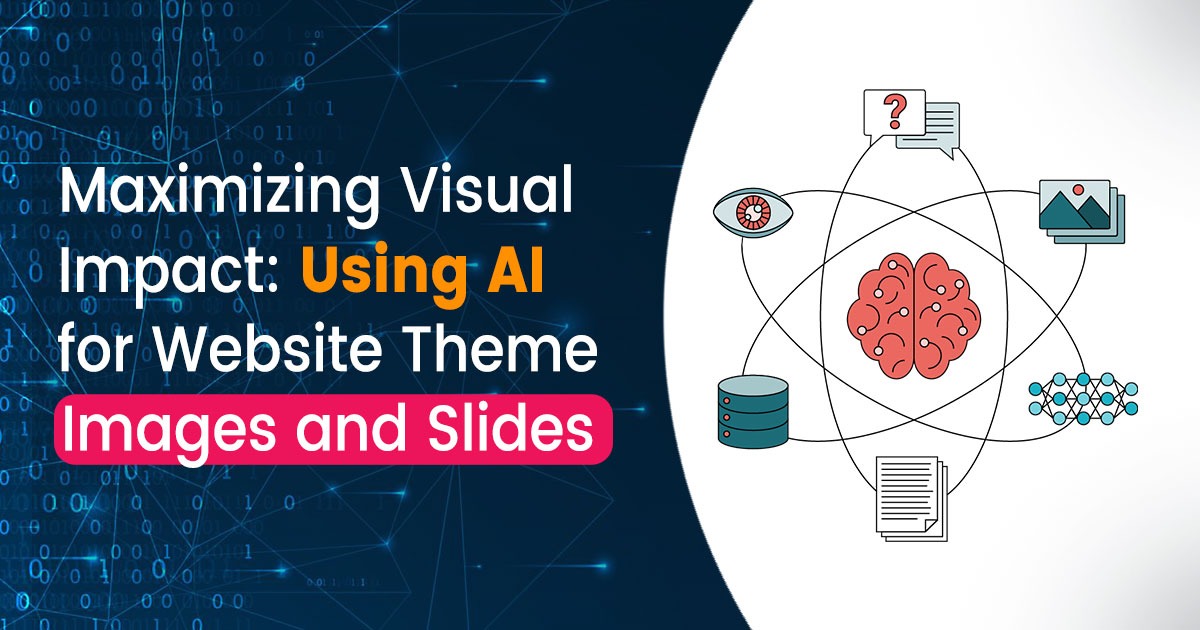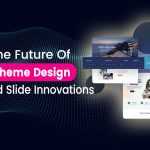Maximizing Visual Impact: Using AI for Website Theme Images and Slides
|
Getting your Trinity Audio player ready...
|
Maximizing Visual Impact: Using AI for Website Theme Images and Slides
In today’s highly competitive digital landscape, a visually appealing website can be the difference between capturing an audience’s attention or losing them to another site. First impressions matter, and for most websites, the first impression comes from their design, particularly the images and slides used. As the demand for high-quality visuals increases, Artificial Intelligence (AI) is stepping in as a powerful tool to create, enhance, and optimize website images and slides. This article delves into how AI can be harnessed to create eye-catching theme images and slides that boost your website’s aesthetic appeal.

1. AI-Driven Image Generation
One of the most revolutionary ways AI is transforming web design is through image generation. AI-powered tools can now create stunning, high-resolution images from scratch, based on minimal input. Using advanced neural networks and machine learning algorithms, these tools analyze vast datasets of images to understand patterns, colors, and aesthetics. This allows them to generate images that are not only unique but also highly relevant to the theme of a website.
For example, platforms like DALL·E and MidJourney allow users to generate custom images simply by describing what they want. This capability helps website designers craft tailored visuals that perfectly align with a brand’s identity without the need for extensive photoshoots or expensive stock photography. The result is faster, more flexible content creation that doesn’t compromise on quality or originality.
2. Enhancing Image Quality with AI
Beyond generating images, AI can also enhance and optimize existing images for better visual impact. AI-powered tools can upscale low-resolution images, reduce noise, and adjust lighting and colors to make visuals look more professional. Technologies like AI-based image upscaling and photo enhancement tools are invaluable for website owners who want high-quality visuals but might only have access to lower-resolution images.
For example, platforms like Topaz Gigapixel AI use machine learning to add detail to images when increasing their resolution, which can significantly improve the clarity and sharpness of website images without losing quality. AI can also automate tedious image editing tasks, such as removing backgrounds, adjusting contrast, or even correcting distorted elements in an image.
3. Personalizing Visuals for Target Audiences
Personalization is key to creating engaging websites, and AI can help tailor visual content to different audiences in a more efficient way. Through the analysis of user data and behavior, AI can suggest and even generate images that are more likely to resonate with specific segments of an audience.
For example, e-commerce websites can use AI to present personalized slideshows or images based on user preferences, browsing history, and demographic data. If a user frequently visits the outdoor sports section of an online store, the website’s AI can ensure that they are shown slides featuring camping gear, hiking boots, or other relevant items. This personalized experience helps create a stronger connection between the user and the brand, leading to higher engagement and conversion rates.
4. Dynamic Slideshow Creation
Slideshows are a common feature on websites, especially for showcasing products, services, or key information. However, creating dynamic and visually appealing slides can be time-consuming. AI helps by automating the process of slideshow creation, selecting the best images, layouts, and even transitions based on the content of the website.
Tools like Animoto and AI-powered slideshow generators allow designers to input a set of images or videos, and the AI automatically arranges them into a cohesive, professional slideshow, complete with animations and transitions. This saves time while ensuring the slideshow is optimized for visual appeal and audience engagement. Moreover, AI can analyze user interaction with slideshows, adjusting elements such as transition speed or image selection based on what garners the most positive responses.
5. Optimizing Images for Website Performance
While high-quality images are crucial for creating a visually appealing website, they can also slow down the performance if not optimized correctly. Slow-loading websites can lead to high bounce rates and poor user experiences. AI can help solve this issue by automatically compressing and optimizing images for faster load times without sacrificing quality.
AI-based image compression tools like TinyPNG or ImageOptim use intelligent algorithms to reduce file sizes while maintaining image clarity. These tools are vital for websites that rely heavily on images but need to ensure fast load times, particularly on mobile devices. AI can even adjust image formats automatically to ensure that users are served the optimal version for their device and screen size, further improving performance.
6. Predicting Visual Trends
AI’s ability to analyze large datasets is invaluable when it comes to predicting visual trends. By analyzing millions of images and user interactions across the web, AI tools can help designers stay ahead of the curve by suggesting trending themes, colors, and styles.
For instance, platforms like Adobe Sensei use AI to analyze design trends and make recommendations to creatives on the best design elements to incorporate into their websites. This predictive capability is especially beneficial for businesses that want to ensure their website visuals remain fresh, modern, and in line with user preferences.
7. AI-Powered Accessibility Enhancements
Accessibility is an increasingly important aspect of web design, and AI can help ensure that website visuals are optimized for all users, including those with disabilities. AI-driven tools can automatically add alt text to images, making them more accessible to screen readers used by visually impaired users. Moreover, AI can analyze color schemes and contrast levels to ensure they are suitable for users with color blindness or other visual impairments.
This means that website owners can not only create stunning visuals but also ensure that their content is inclusive and accessible to a wider audience, improving user experience and boosting search engine rankings.
Conclusion: The Future of Web Design with AI
AI is revolutionizing the way we create, optimize, and manage images and slides on websites. From generating unique visuals and enhancing image quality to personalizing content and predicting design trends, AI offers an array of powerful tools to maximize visual impact. By integrating AI into the web design process, businesses can create visually stunning websites that captivate users, enhance engagement, and ultimately drive conversions.
As AI continues to evolve, the possibilities for website design are virtually limitless. Those who leverage AI for their website images and slides today will be better positioned to create the captivating, high-performance websites of tomorrow.

 Previous Post
Previous Post